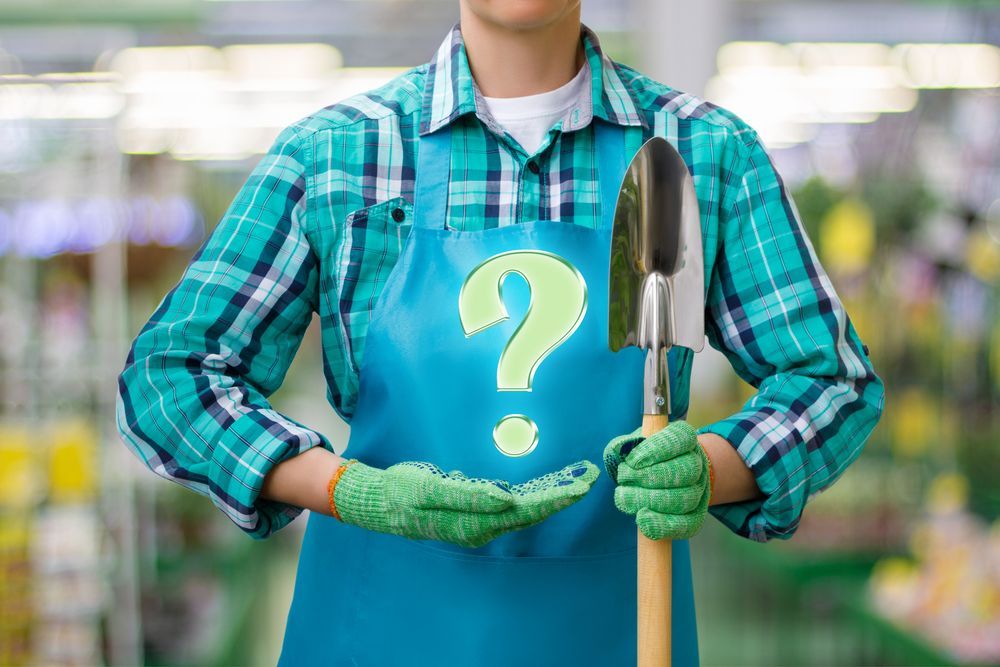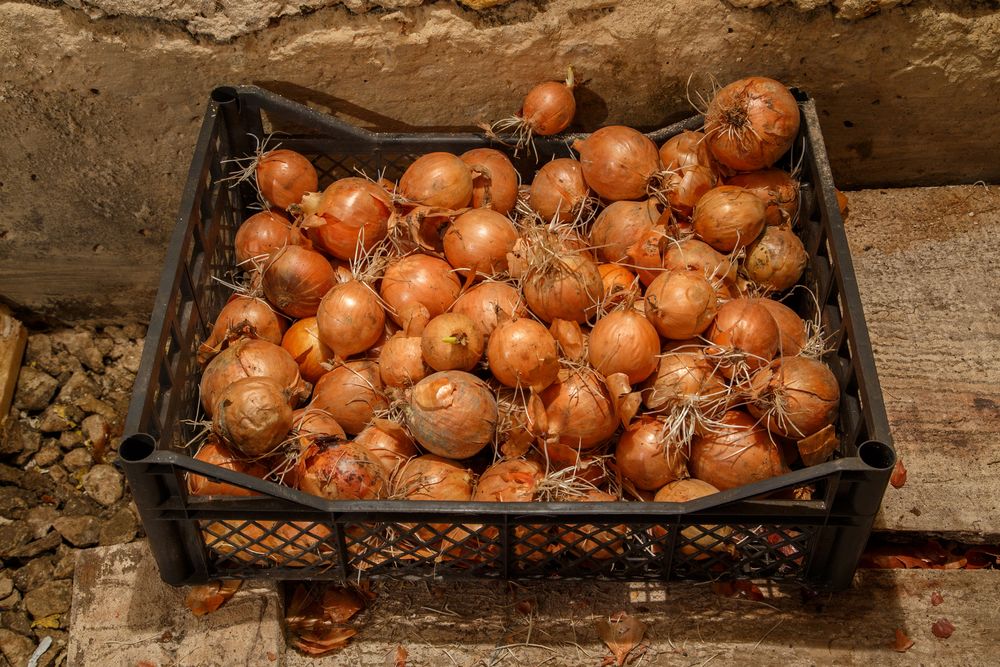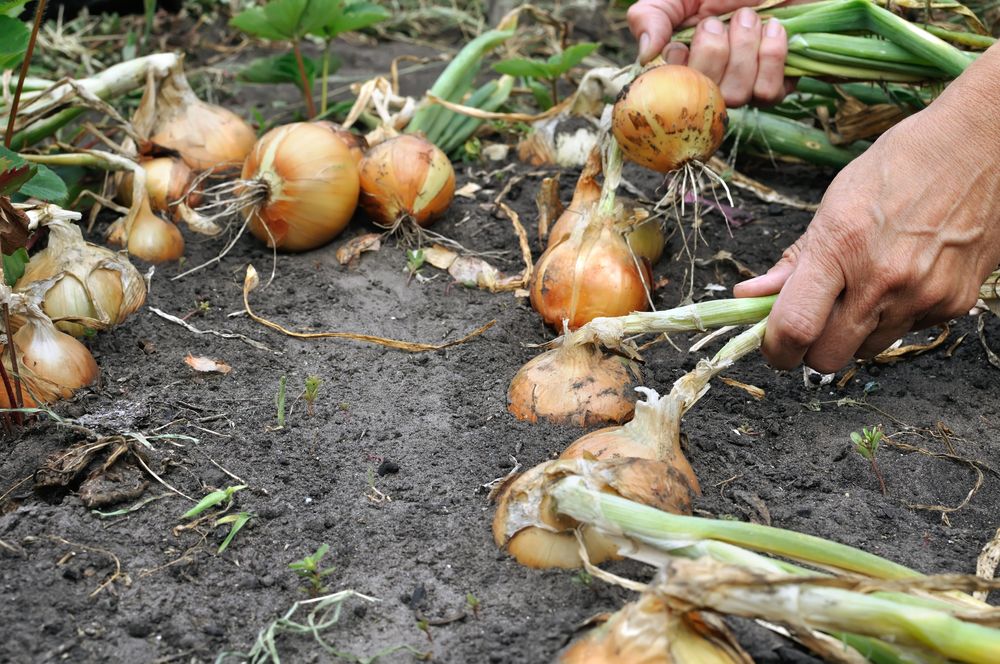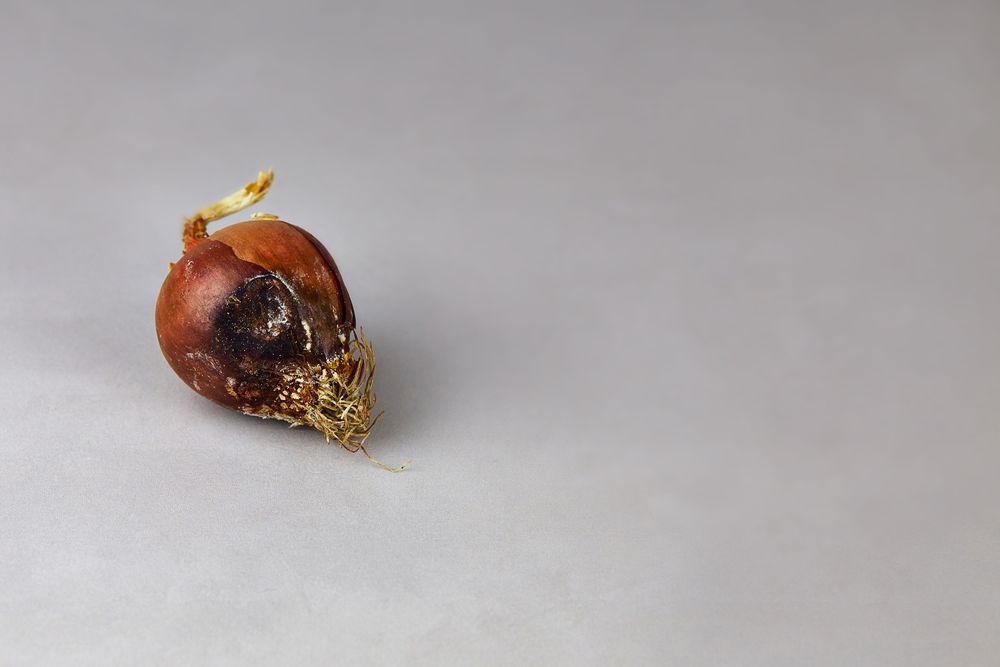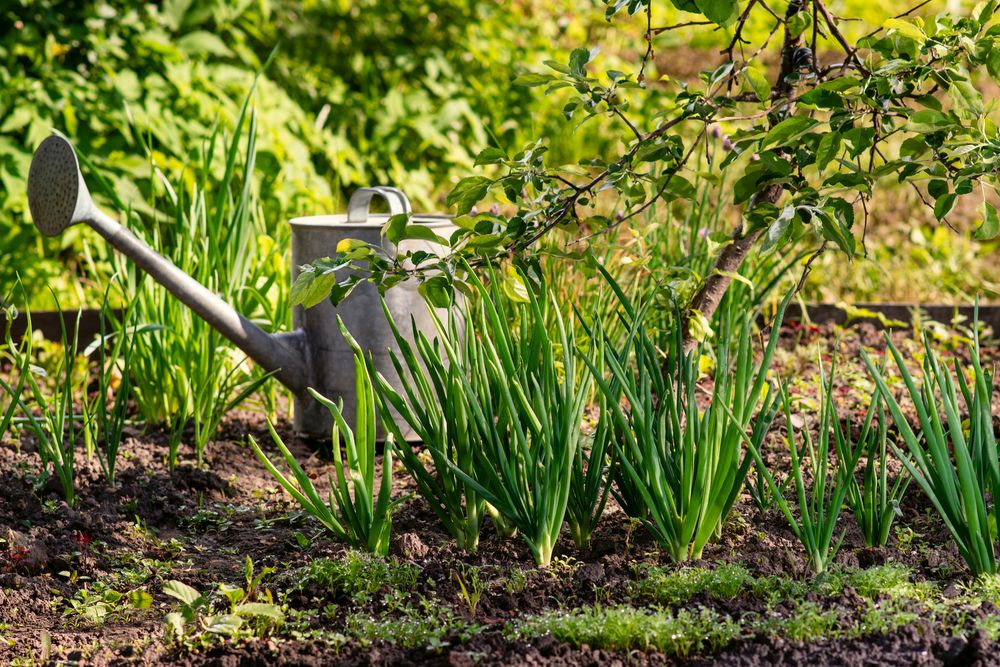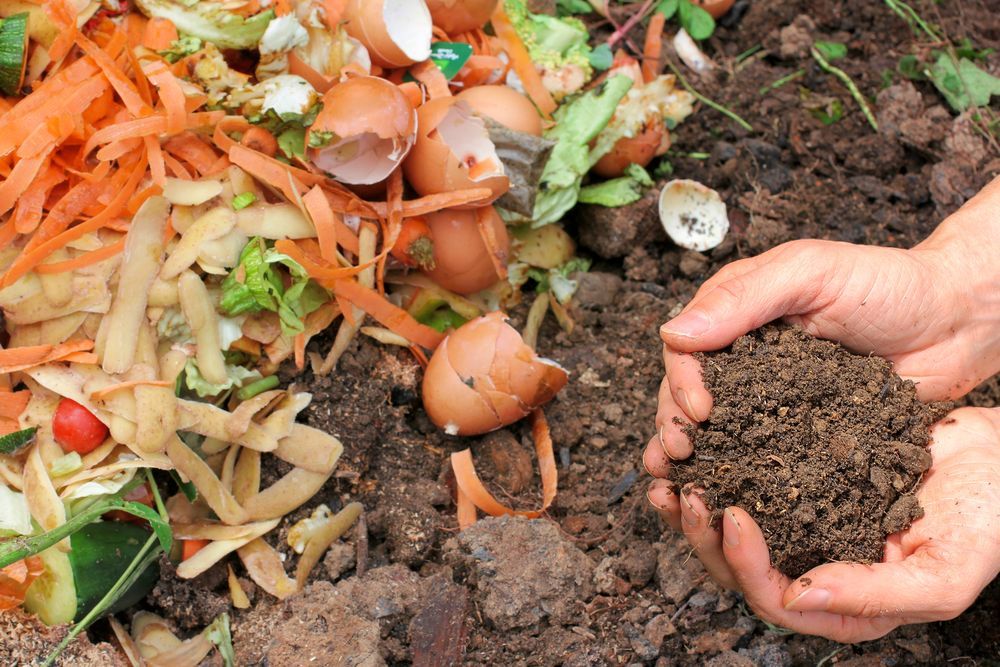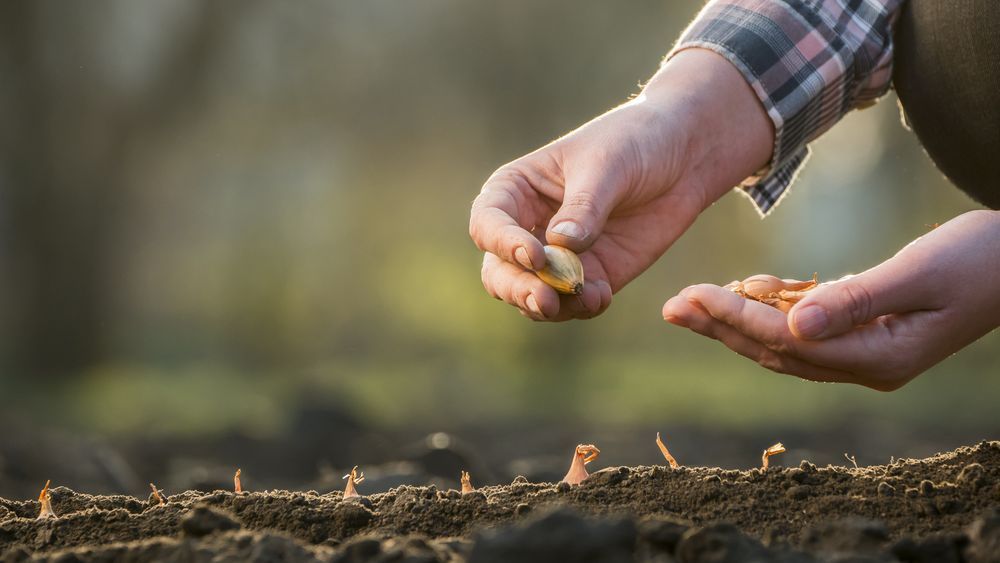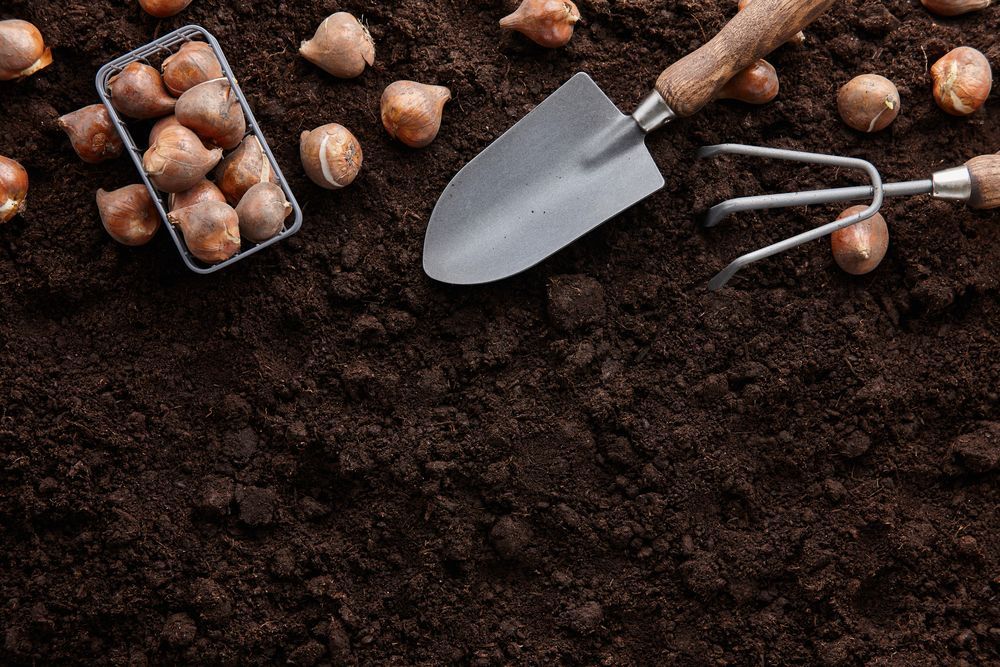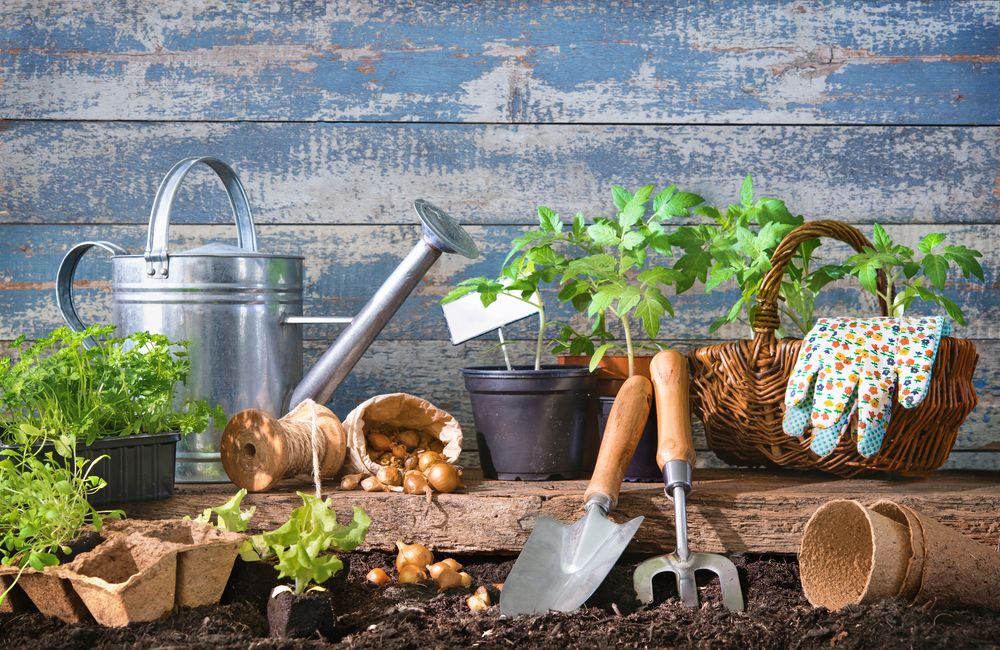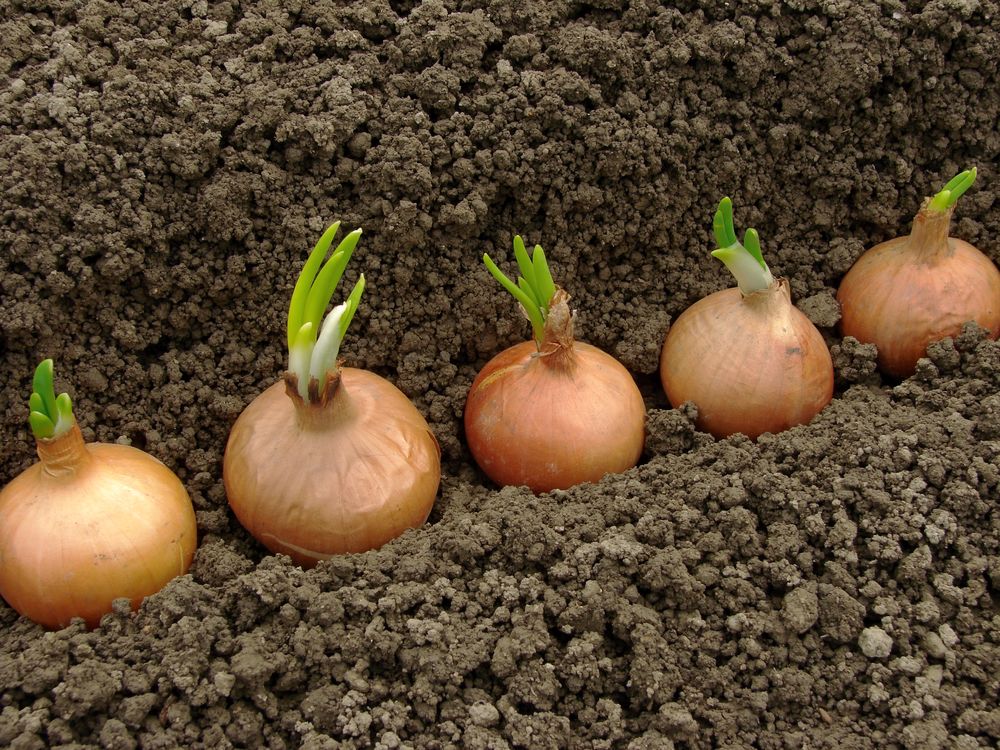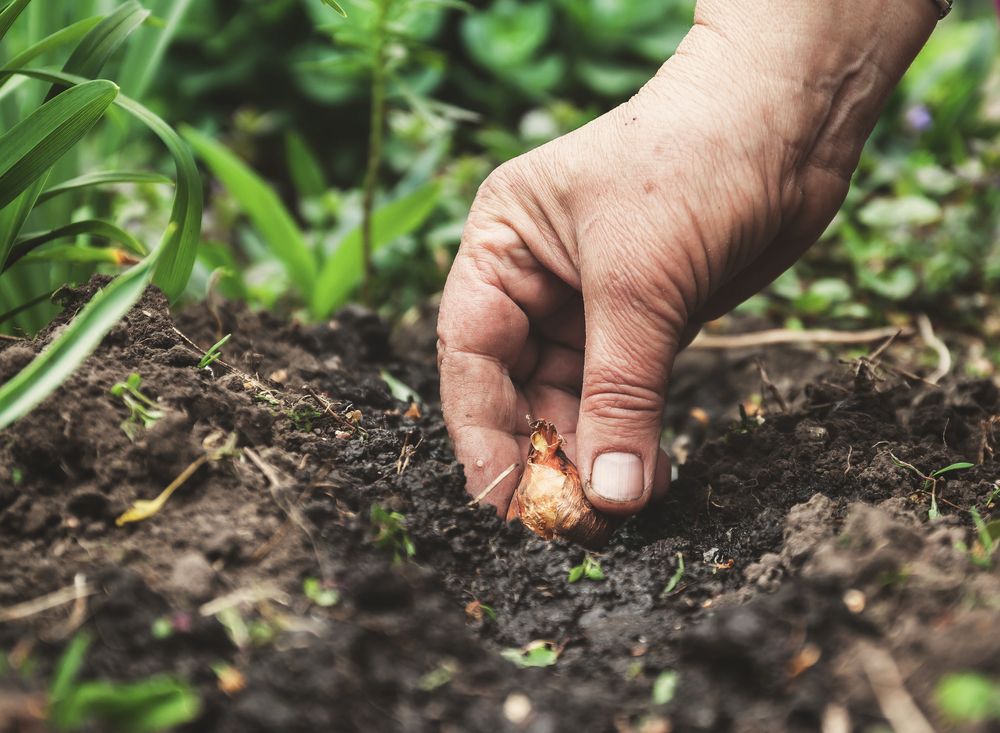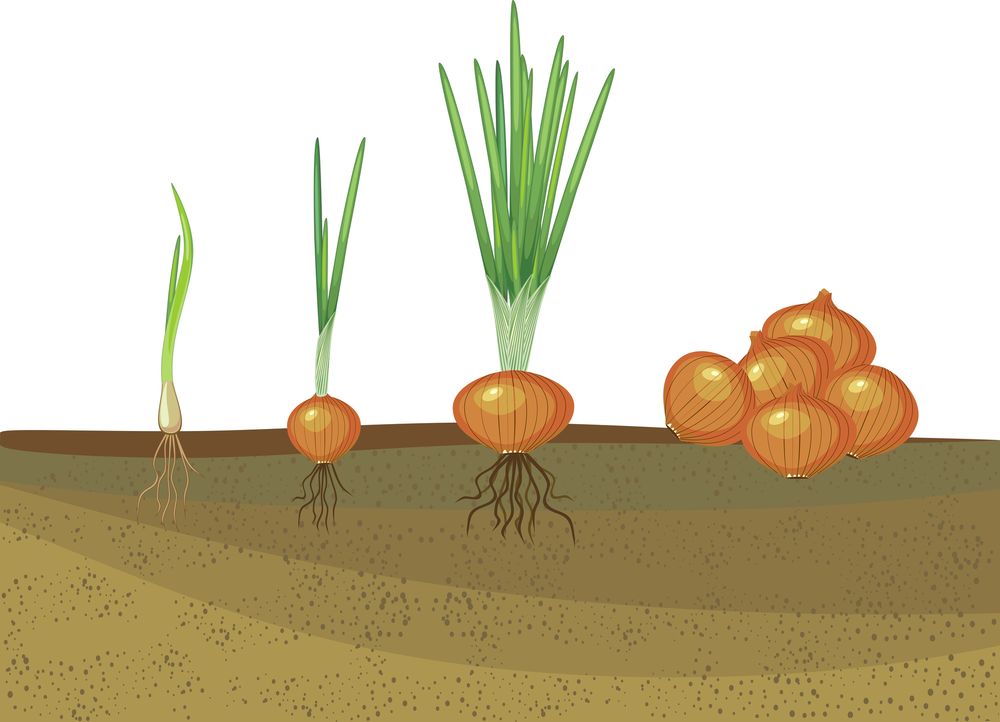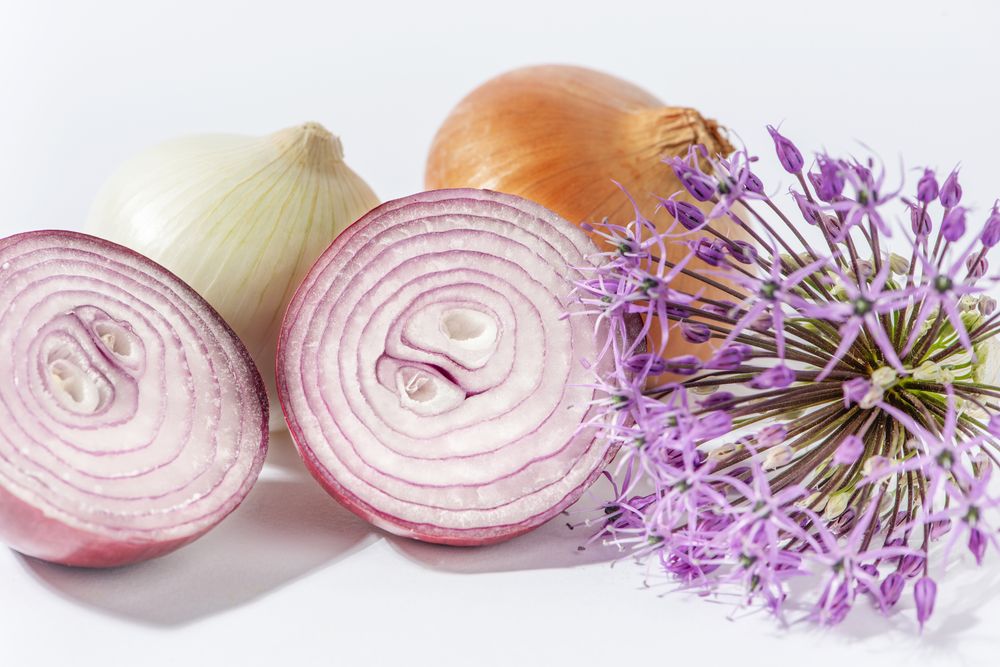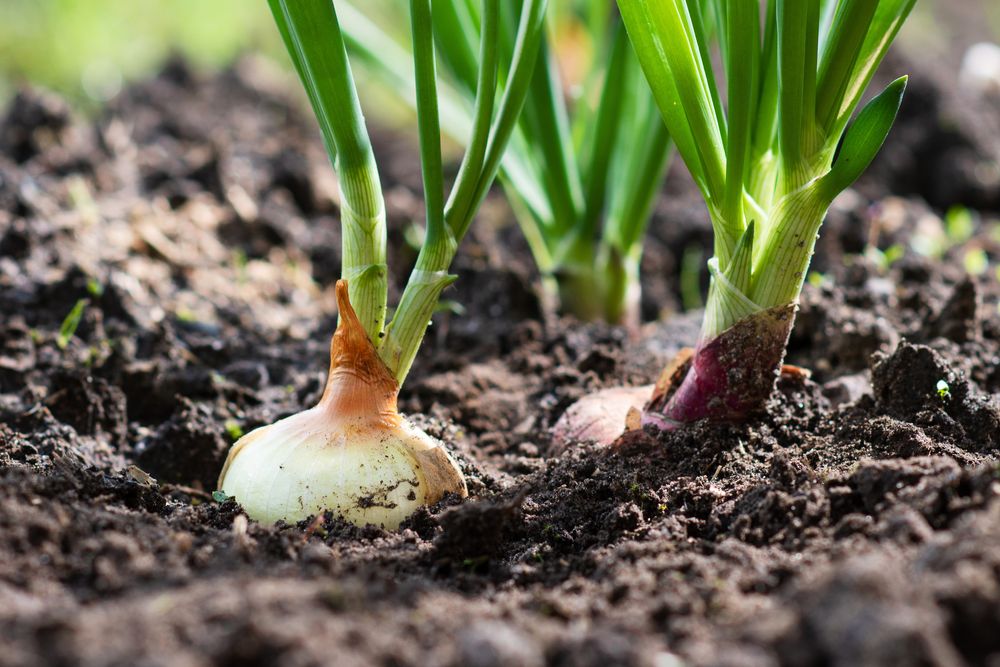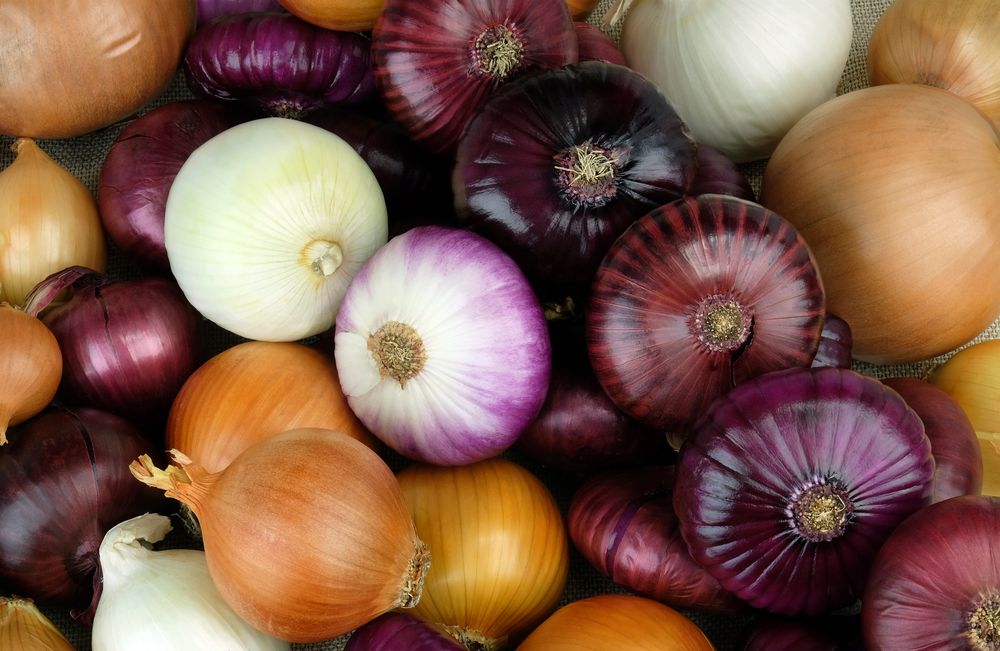Growing Onions: Tips and Tricks on How to Grow Onions
Growing onions is a simple and rewarding process that can be done in any size garden. All you need is a bit of space, soil, and onion bulbs. Keep reading to find out how to grow onions correctly.
This article teaches you everything you need to know about growing onions in your garden.
Table of Contents
Let’s get started with general specifications about how to grow onions.
Growing Onions: Types, Life Cycle, Planting Times, and More
The onion (Allium cepa) is a type of bulbous vegetable harvested pretty much everywhere around the world. And it’s the most popular vegetable species from the genus Allium.
The following are general specifications for growing onions:
- Onion plants grow in temperate climates worldwide. And they are also well-suited for indoor cultivation if you live in a hot or dry environment.
- Onions are perennials that prefer cool weather, so they grow best when planted in the fall for spring and early summer harvest.
- This vegetable is very bulky and requires a lot of room to spread its roots deep into the dirt.
- The best part about growing onions is that they come back year after year with little care from you. Although you must water the plants generously, so they don’t wilt too quickly, your garden can get by just fine without constantly tending them.
In the next section, let’s find out the types of onions you can grow in your garden.
Types of Onions
Here are popular common onion varieties you can grow, together with simple cooking tips:
- Yellow onions (also known as brown onions) are the most common types of onions used in European cuisine. People prefer them because they are significantly sweeter than other onion varieties. For example, French onion soup is so successful due to the signature sweet flavor of yellow onions.
- Red onions (also known as purple onions) are usually found in Asian cuisine. They’re known for their sharp pungent flavor. But they’re not recommended for cooking at high temperatures. Due to this aspect and their taste, it’s best to eat red onions raw (e.g., in salads) or grilled.
- White onions are typically used in classic Mexican cuisine. They’re popular because of their milder flavor. White onions gain a golden color when cookies and a recognizable sweet flavor when sautéed.
Botanically, onions are related to other vegetables with a similar flavor, such as chives, Chinese onions, garlic, leeks, shallots, and scallion.
In the next section, let’s find out the onion life cycle.
Onion Life Cycle
The onion is a biennial plant, so it takes 2 years to complete a life cycle. However, because we always harvest them midway through their life cycle, you never actually get to see the seed.
Here’s what happens during the first year of the planted onion:
- You plant the seed, which later germinates.
- The onion plant grows leaves and starts feeding itself through photosynthesis and using the soil’s nutrients.
- As the plant develops, it deposits nutrients, thus creating its bulb.
- If left in the ground over winter, the onion bulb will remain alive, although dormant.
Here’s what happens during the second year of the planted onion:
- Once temperatures rise, the onion comes back to life.
- The onion develops a flower stalk that blooms during spring or summer.
- Seeds start developing by fall.
In the following section, we will find out the best time for planting onions.
When to Plant Onions
There is no accurate date for planting onions. But if your region has a well-established seasonal cycle, you’re in luck since you can plant the onions based on what type of harvest you’re looking for. The harvest type can be summer or overwintered spring.
Here’s when you should plant the onions based on your preferred harvest type:
Harvesting Onions in the Summer
For a summer harvest, plant onions in early spring if your region has frigid winters. That’s because the soil will be frozen solid in the winter, unable to sustain onion growth.
The best time for planting onions in early spring is between March and April because the temperatures are constant and never go below 28° F (-2° C).
Harvesting Onions in the Overwintered Spring
For an overwintered spring harvest, plant your onions in early fall if your climate allows it. The soil is still relatively warm in autumn, so the onions will have enough time to develop a robust root system before winter sets it.
The best time for planting onions in early fall is 30-45 days before winter kicks in. The plants will remain dormant when the cold season arrives and will resume growing when spring returns.
Compared to the onion summer harvest, the overwintered spring harvest requires little maintenance, so you will spend less time tending the onion plants.
In the next section, let’s find out the best types of onions to grow by considering the number of sunlight hours they need.
Onions by Day-Length
When growing onions, it’s vital to remember that all onion varieties are day-length sensitive. As such, these vegetables need a certain number of daylight hours to develop properly.
Based on the number of required daylight hours, you can plant three types of onions:
- Long-day onions grow bulbs when exposed to 14-16 hours of sunlight daily, so they’re perfect for regions north of the 40° parallel.
- Intermediate-day onions are also known as midsummer onions and need 12-14 hours of sunlight daily to create bulbs. As such, you should plant intermediate-day onions during spring or autumn.
- Short-day onions develop bulbs with 10-12 hours of sunlight. It’s best to plant short-day onions during winter or in early spring.
Choose an onion variety by considering the season and the number of sunlight hours your region receives in that particular seson.
In the next section, let’s find out what tools you need to grow onions in your garden.
Tools Needed to Plant Onions
Few tools are necessary for growing onions in your garden. These are:
- Gardening gloves since you must protect your hands from germs and dirt under your fingernails.
- Safety glasses come in handy if an errant seed flies into your eye.
- A garden trowel or a bulb planter since its sharp blades make it effortless to dig into the ground.
- Hand and knee pads protect your extremities from dirt and prevent slipping.
- A small spade or shovel helps dig 1-foot-deep holes, depending on how big your onions will get.
In the next section, let’s find out the best soils for planting onions.
Best Soils for Planting Onions
Onions are a bit picky when it comes to the soil type, so here’s what you need to know:
- This vegetable prefers well-drained soils and doesn’t need watering after planting it.
- The texture of the soil is important since onions love loose, light, and loamy soil. Besides, clay soil doesn’t typically yield good crops since it affects bulb growth.
- As for the nutrient content, onions can be pretty demanding, especially regarding phosphorus, nitrogen, and potassium (NPK).
In the next section, let’s find out the steps required for growing onions.
How to Grow Onions Using Bulbs and Seeds
It’s quite challenging to start growing onions from seeds, so it’s recommended to buy onion bulbs.Still, we’re showing you both methods: growing onions using bulbs and using seeds.
Here’s the first method for growing onions using bulbs:
- Prepare the soil by clearing out any rocks and debris and removing any grass and weeds.
- Loosen the top 8-12 inches so that the soil is no longer compacted.
- Supplement the soil’s lack of nutrients by adding extra organic matter such as compost. Also, make sure the compost is moist.
- Plant the onions efficiently in sets, 2-6 inches apart from each other and 3/4 inches deep. Don’t plant the plants more than 1-inch deep.
- If your transplants are bigger, you can spread them out a bit more, about 4-5 inches apart in rows that are about 15 inches apart.
Here’s the second method for growing onions using seeds:
- Prepare the soil by following the same steps as in the previous section for growing onions using bulbs.
- Dig shallow rows that are between 12-18 inches apart.
- Plant the seeds by sprinkling them evenly, misting them with a bit of water, and covering them with a thin layer of seed starting mix. Afterward, simply press down gently, so the seeds come in contact with the moist soil.
- Once the seeds start growing, weed out the weaker ones so that they don’t get too crowded, up until you have about 4-6 inches between each plant.
In the next section, let’s find out how to care for your onions after planting them.
Growing Onions: Plant Care
Onions as hardy and resilient. Still, these vegetables require routine care if you want a prosperous harvest the next season.
To tend to your onion plants, let’s find out more about fertilizing, watering, and pests and diseases.
Fertilizing Onions
Earlier in this article, we mentioned that onions could be quite demanding, especially regarding phosphorus, nitrogen, and potassium (NPK). As such, ensure that the fertilizer you buy has a balanced NPK ratio or has slightly more phosphorous than nitrogen.
Most commercial fertilizer manufacturers have standardized how they display the NPK ratio on their products. It usually comes in the form of 3 numbers, one for each essential nutrient:
- Nitrogen (N)– #1
- Phosphorous (P)– #2
- Potassium (K)– #3
According to theNational Gardening Association, the best fertilizers for onions are the ones that have the following values:
Compost is the backbone of your onion’s fertilizer requirements, so it’s best to work it into the soil before planting the vegetables.
If you don’t have any compost available, however, plenty of other organic nitrogen sources can be used for onion fertilization, such as blood meal and fish meal. This will provide your onions with about 2-3 pounds of fertilizer per 100 square feet. Just sprinkle it around the base of your plants and water it generously.
In the following section, let’s find out the watering requirements when growing onions.
Watering Onions
Onions aren’t fickle when it comes to water.
Follow these four steps to keep your onions well hydrated:
- Water the soil immediately after planting or transplanting the onions.
- Moisten the soil every time you see the first sprouts.
- Ensure your onions receive about 1 inch of water weekly.
- Reduce the amount of water when the top part of the plant starts dying to prevent bulb rot.
In the following section, let’s find out about pests and diseases commonly associated with growing onions and how to treat or prevent them.
Pests and Diseases
Onions need plenty of protection from pests during their lifetime, especially in the early stages of growth. It’s the only way to ensure they become strong enough to produce a bountiful crop.
The following are common pests and diseases that may affect your onion patch, the damages they cause, and how to deal with them:
- Onion fly causes the leaves of the onion plant to wilt and turn yellow and the bulbs to rot. You can get rid of this pest by rotating crops, dressing seeds, sowing early, and destroying the afflicted onion plants.
- Stem and bulb eelworm causes swollen and distorted foliage, killing young plants and causing older ones to produce soft bulbs. Unfortunately, there is no known cure. And the only way to handle this pest is by removing the plant and burning it.
- White rot causes the roots of the onion plant to rot and the foliage to turn yellow. To identify white rot, check if the bulbs of the onion plant are covered with a fuzzy white mass. Regrettably, no cure exists for this affliction, so any sick plants must be removed and destroyed.
- Neck rot causes a grey mold around the neck and upper parts of the onion plant’s bulb. In the advanced infestation phase, this disease causes the bulb to dry up and eventually die out. You can prevent this disease from manifesting by ensuring proper air circulation when storing the onions.
In the following section, let’s find out more about harvesting onions.
When to Harvest Onions
Onions are quite transparent and let you know immediately when it’s time to pick the vegetables.
This section teaches you how to check your onion plants for harvest, the best time of the day for harvest, and the correct steps for harvesting onions.
To figure out when it’s time to harvest the onions, you just have to look at the plant’s leaves. Once the leaves start to flop over and turn brown (especially around the neck of the onion), the plants have stopped growing and are ready to be harvested.
The best time to harvest your onions is in the early morning, before the temperature rises.
The following describes three steps for harvesting your onions:
- Carefully pull on the onion’s top.
- If the ground isn’t loose enough, use a spade to dig them up.
- Gently shake the onions to dislodge any soil still clinging to the bulb.
In the next section, let’s find out how to store onions correctly.
Storing Onions
In an earlier section, we said you could prevent neck rot by ensuring air circulation when storing your onions. But neck rot isn’t the only problem associated with suspicious onion storage conditions.
The way you keep your onions stored can greatly impact the quality of the vegetables, especially if you’re concerned about molds or diseases breeding in them.
We recommend storing onions in well-ventilated areas at 32-40° F (0-4° C) temperatures with 65-70% humidity to prevent the bulbs from rotting.
If you follow these instructions, your onions should keep for up to 3 months before they start sprouting or rotting.
In the next section, you can learn more helpful information about onions.
Growing Onions (FAQ)
Find out more valuable details about how to grow onions in your garden:
Are onions good for you?
Yes, onions are healthy. They contain many vitamins and minerals, including vitamin C, folic acid, potassium, phosphorus, calcium, manganese, copper, B6, pantothenic acid, and erythorbic acid.
How many carbs are there in onions?
The nutritional profile of onions depends on the species and variety. If you’re looking for average values, here they are:
- 89% water
- 11% solid organic matter
- 9% carbohydrates
- 1% protein
- Negligible amounts of fat
If you’re thinking about including onions in your diet, know that they have a relatively low energy value of about 166 kJ (40 kilocalories) per 100 g (3.5 oz).
What is the difference between white and yellow onions?
White onions are milder than yellow onions. Plus, white onions havethinner, papery skin that needs to be removed before eating or cooking with them. Meanwhile, yellow onionsare typically sweeter and larger; they often require peeling before eating or cooking.
The next and final section summarizes the entire article on growing onions.
Growing Onions (Summary)
To summarize, we started with the general specifications about growing onions and mentioned the most popular types of onions to grow, based on their varieties and life cycles.
Next, you learned the best times for planting onions, together with the tools and best soils required for planting onions.
Then we detailed the exact steps for growing onions using bulbs and seeds, followed by onion plant care (fertilization, watering needs, and pests and diseases).
Finally, you learned how to harvest and store onions so that you can enjoy them longer.
What are your best tips and tricks for growing onions? Leave us a comment in the section below!
